Wrangell – St. Elias National Park & Preserve is one of our favorite US National Parks. Its remote location, countless mountains and glaciers, and sheer beauty is simply astounding. It feels like an adventure to drive in on McCarthy Road, pull your belongings across the footbridge, and get shuttled to your lodge or campground. From Kennecott and McCarthy, you can go glacier hiking, tour an abandoned copper mill, and venture into the backcountry. And to see this park from the sky is absolutely mind-blowing.
Take Yellowstone National Park, multiply it by 6, and that’s roughly the size of Wrangell – St. Elias. Throw in four mountain ranges (and some of the tallest peaks in North America), massive glaciers, wildlife, more than a few mosquitoes, and 100 miles of road, and you have a rugged, remote, spectacular wilderness to explore.
It can be challenging, planning a trip to Wrangell – St. Elias National Park. Its massive size combined with its remote location and lack of roads can make it feel inaccessible, but that’s also part of its beauty.
We want to make things easier for you.
In this guide, we cover the best things to do in Wrangell – St. Elias National Park and Preserve with important tips to have the best experience.
Please practice the seven principles of Leave No Trace: plan ahead, stay on the trail, pack out what you bring to the hiking trail, leave areas as you found them, minimize campfire impacts, be considerate of other hikers, and do not approach or feed wildlife.
Interesting Facts about Wrangell – St. Elias
Wrangell-St. Elias National Park & Preserve is the largest national park in the United States. At 13 million acres, it is larger than Switzerland, about twice the size of Maryland, and six times the size of Yellowstone National Park.
Two roads head into the park: McCarthy Road (59 miles long) and Nabesna Road (42 miles long). That’s a grand total of 101 miles of road in a park that is larger than the country of Switzerland.
This national park contains the greatest concentration of glaciers in North America. 33% of the park is covered with glacial ice. The Bagley Icefield is the largest nonpolar icefield in North America. The Nabesna Glacier is the longest valley glacier in the world, the Hubbard Glacier is the longest tidewater glacier in North America, and the Malaspina Glacier is North America’s largest piedmont glacier.
Four mountain ranges are located in Wrangell-St. Elias National Park: the Wrangell Mountains, the St. Elias Mountains, the Chugach Mountains, and the Alaska Range. The St. Elias Mountain Range is the highest coastal mountain range in the world.

View of Wrangell – St. Elias on a flightseeing tour.
Within the park are nine of the highest 16 mountain peaks in the USA. Mount St. Elias is the tallest in the park, at 18,008 feet.
Wrangell – St. Elias officially became a national park on December 2, 1980. It is also a UNESCO World Heritage Site.
In 2024, 81,670 people visited this park, making it the 8th least visited park in the USA.
A Quick Geography Lesson
Before we jump into the best things to do in Wrangell – St. Elias National Park and Preserve, it helps to get an overview of this park.
This sprawling national park is located in southeastern Alaska. With just two roads, most of the park is only accessible by foot and by plane.
The towns of McCarthy and Kennecott (also spelled Kennicott) sit side by side and are located deep inside the park. These two towns are a great home base to explore Wrangell – St. Elias, with many flightseeing, hiking, and backpacking adventures starting here. You can get to McCarthy and Kennecott by plane or by driving McCarthy Road.
Copper Center, which sits just outside of the park border, is easily accessible, since it is located on Richardson Highway. From the Visitor Center, you have great views of the park.
Nabesna Road enters the north side of the park. This remote, gravel road leads to more hiking trails and historical sites.
On the National Park Service map below, I highlighted the main areas of the park as well as McCarthy and Nabesna Roads.

Best Things to Do in Wrangell – St. Elias National Park & Preserve
#1 Visit Copper Center
Copper Center is located on Richardson Highway, just outside of the park boundary.
At the Visitor Center, you can learn more about the park and speak to a park ranger about park and road conditions, which is a good idea to do if you plan to drive to McCarthy/Kennecott. Watch the park film, attend a guided talk by a park ranger, visit the bookstore, and get an overview of the park on the 3D map.
Next to the Visitor Center are short walking trails that lead to viewpoints of the Wrangell Mountains. The Copper River Bluff Trail (0.5 mile loop) leads to a scenic overlook of the Copper River and Wrangell Mountains. The Boreal Forest Trail (0.5 mile loop) loops through the forest around the Visitor Center.
The Visitor Center is open from May through September.

View of the Wrangell Mountains from Copper Center.

Copper River Bluff Trail
#2 Drive McCarthy Road to McCarthy/Kennecott
McCarthy Road is a 59 mile unpaved road that connects Chitina (pronounced chit-na) with McCarthy.
This road is notorious for potholes and railroad spikes that cause flat tires. Most rental car companies do not allow you to drive on this road.

McCarthy Road Conditions
We rented our car from Budget. Prior to our trip, Tim spoke with the rental company and got pre-approval to drive this road. This involved renting a midsize SUV or larger, bringing proof of car insurance, and being aware that they would not be able to assist us if we got stranded. Make sure you call the rental counter where you plan to pick up your vehicle to confirm their requirements for driving this road.
We drove a Jeep Cherokee and had no issues on McCarthy Road. In fact, the road was very easy to drive and we were surprised at how well-maintained this road was, especially with all of the horror stories we read online.
McCarthy Road was built on top of the old railroad line that ran to McCarthy. Over the years, the railway spikes began sticking up out of the gravel road, causing flat tires. A few years ago, someone came through and removed these spikes, although a few probably remain. Talking to the locals, the driving conditions have greatly improved and flat tires occur much less frequently.

This photo is a good representation of the McCarthy Road conditions.
PRO TRAVEL TIP: Before doing this drive, make sure you know how to change a flat tire. There is no cellular service along this road so you will not be able to call for help. Also, make sure you fill up your gas tank in Glennallen, Copper Center, or Valdez. We did not see a gas station in Chitina and there are no gas stations along McCarthy Road.
Things to See along McCarthy Road
The NPS website has an excellent guide for things to see along McCarthy Road. Here are the main sights that stood out to us.
Railroad Cut: At the start of McCarthy Road, the road cuts through a gap in rock walls. This was once a tunnel and was later opened up to what we see today.

Chitina River: Within the next few miles, there are several pull outs overlooking the confluence of the Copper and Chitina Rivers.

Kuskulana River Canyon and Bridge: At mile 17, you will cross a single-lane railroad bridge that spans the river canyon. Keep a lookout for oncoming traffic and do not stop on the bridge for photos (I took the photo on the bridge by putting my head out of the moonroof of our vehicle).


Gilahina Trestle: At mile 29, you can see the old, wooden railroad trestle that was constructed in 1911.
PRO TRAVEL TIP: Keep an eye out for wildlife. Moose, bear, bald eagles, and even bison can be seen along this road.

Bison on the side of McCarthy Road.
Views of Kennicott River and Glacier: At mile 58, just before reaching the end of the road, you can look out over the Kennicott River.

Mile 59: End of the Road: McCarthy Road ends at the Kennicott River. There is a large parking lot here. Inside of the Visitor Information building you will pay your parking fee (in 2021 it was $10 per day).


Getting to McCarthy and Kennecott
To get to McCarthy (and continue on to Kennecott), you will have to cross the footbridge over the Kennicott River.
On either side of the bridge are carts. Load your things onto one of these carts and pull your things to the opposite side of the river. You can leave the cart here.
There is the chance that all of carts will be on the opposite side of the river, so if you don’t see one, you will have to cross the bridge and pull one back (or just carry your things without using a cart).


On the opposite side of the bridge is a dirt road and a “rest stop.” The McCarthy shuttle stops here frequently. You can take the shuttle to McCarthy or continue up the road to Kennecott. It is just a two minute ride to get to McCarthy and it takes about 15 minutes to get to Kennecott.
If you are staying at the Kennicott Glacier Lodge, there is a free shuttle that connects this rest stop with the lodge.
PRO TRAVEL TIP: If you don’t plan to drive McCarthy Road, you have two other options for getting to McCarthy and Kennecott. From Chitina, you can take the Kennicott Shuttle or you can fly from Chitina to McCarthy Airport.
#3 Visit Kennecott
In 1900, copper was discovered in the area and six years later, Stephen Birch began construction of the mine, with funding from Daniel Guggenheim and J. P. Morgan. Kennecott Mines was named after the Kennicott Glacier and a clerical error changed the “i” to an “e.”
From 1909 to 1938, over 4 million tons of ore were produced from the Bonanza, Jumbo, Erie, and Mother Lode mines. A railway was constructed to transport the copper from Kennecott to Cordova. Approximately 300 people worked in the mill town and another 200 to 300 people worked in the mines.
In 1938, the mines closed once the copper ore was exhausted. Kennecott was abandoned, although a few families stayed behind. This area was a ghost town for several decades.
In the 1980’s, Kennecott became a tourist destination once Wrangell – St. Elias became national park.
Now, Kennecott has been transformed into a tourist town. Visitors can stay at the Kennicott Glacier Lodge. There is a park visitor center, several restaurants and gift shops, as well as the offices of guiding companies. This small town has a beautiful setting, as it sits on a hillside overlooking the Root and Kennicott Glaciers.


View of Kennecott from the Thirteen Glacier Flightseeing Tour.
#4 Visit the Town of McCarthy
In the early 1900’s, during the mining boom, the miners and their families lived in Kennecott. Alcohol and prostitution were forbidden in Kennecott and McCarthy became the place to go for a drink or for female companionship. McCarthy was a thriving town with a hospital, school, bar, and brothel.
Now, McCarthy is a tiny, charming town that’s worth a quick visit while you are in the area. There are several small guesthouses and restaurants, as well as a museum and general store. It takes just a few minutes to walk from one end of town to the other.
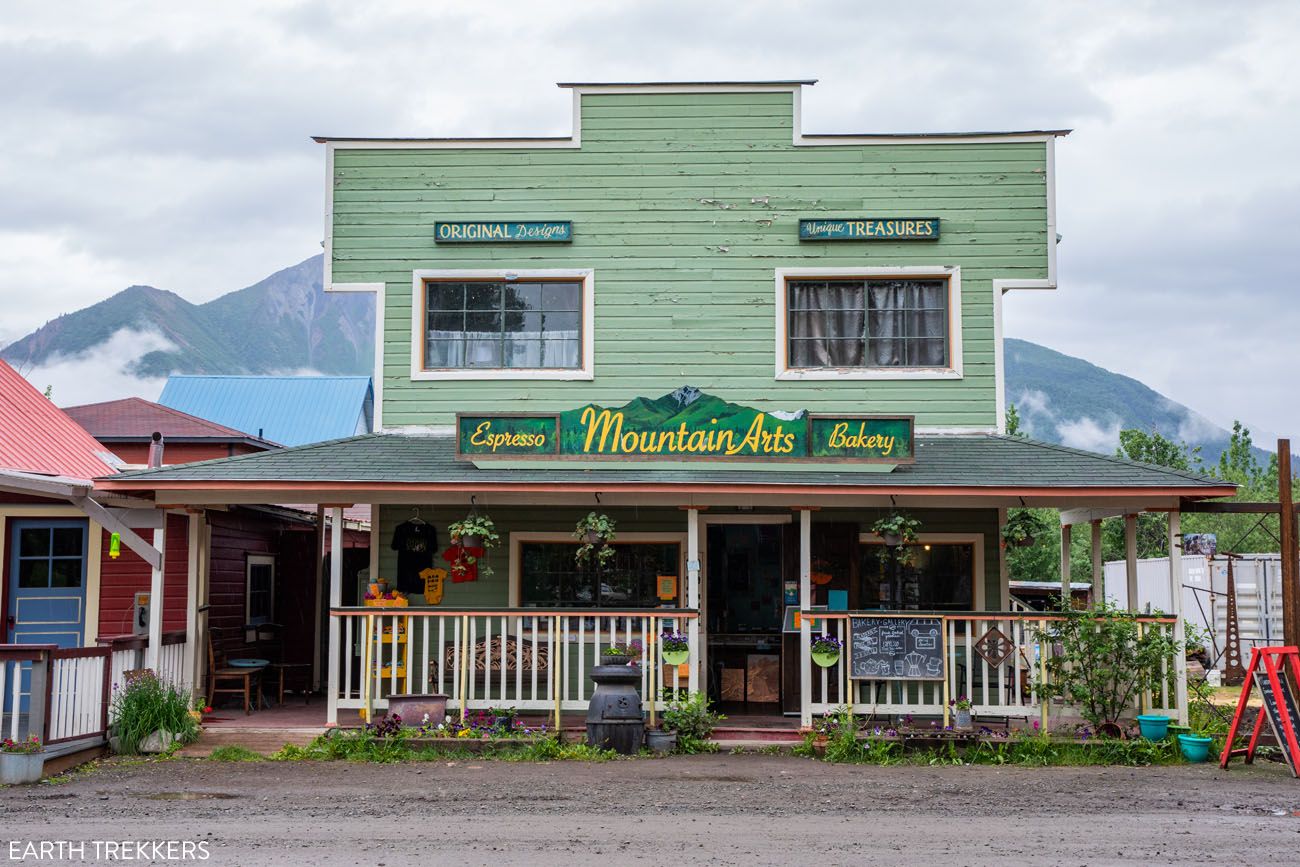

We highly recommend having lunch or dinner at the Potato. The McCarthy – Kennicott Historical Museum is small and worthwhile if you want to learn more about the history of this town.
MCCARTHY – KENNECOTT SHUTTLE: It is about 4 miles from McCarthy to Kennecott. There is a regular shuttle that connects these two towns. It costs $5 per person, takes 15 minutes to travel between McCarthy and Kennecott, and runs approximately every 30 minutes. You can also walk between these two towns (allow 1 to 1.5 hours).
#5 Visit Kennecott Mines National Historic Landmark
This national landmark includes the land and the buildings used during the mining of copper in the early 1900’s. The mines, which sit high up in the mountains, is where the copper ore was extracted. The mill town, which is in Kennecott, is where the ore was processed.
Once Kennecott was abandoned in 1938, the buildings were deserted for many years.
In 1978, Kennecott was listed on the National Register of Historic Places and in 1986 it was designated as a National Historic Landmark.
Many of the old buildings can be seen on a stroll through Kennecott. Currently, the mill is undergoing a renovation project to stabilize it, but you can still visit the mill on a tour. If you are interested in the history of the area, this is one of the best things to do in Wrangell – St. Elias.
Tours last two hours and you get to visit the 14-story mill from top to bottom. The views over Kennecott and the glaciers are awesome, but it is also a unique experience, climbing down ladders and steep staircases, and seeing the old mining equipment. It makes a great rainy day activity in Wrangell – St. Elias.


View from the mill



In 1975, John Denver filmed a TV special that featured a chase scene through the Kennecott Mine. Click here to see it on the Wrangell – St. Elias National Park’s Facebook page.
#6 Take a Flightseeing Tour
One of the best things to do in Wrangell – St. Elias National Park is to see it from the sky. There is no better way to truly appreciate the sheer size of this park and to get a view of its endless number of mountains and glaciers.
Since this park is so large and has so few roads, one of the best ways to experience it is on a flightseeing tour. You will fly over countless mountain peaks, some of the largest glaciers in North America, get up close views with icefalls and icefields, soar over Kennecott, and truly see just how large and vast this national park is.
Not only was this our favorite experience in the park, it is also one of our favorite experiences in the US national park system.


Bagley Icefield


Seeing these mountain peaks and flowing rivers of ice from the sky is definitely one of the best things to do in Wrangell – St. Elias National Park.
There are two primary companies that offer flightseeing tours of Wrangell – St. Elias National Park. Wrangell Mountain Air, who we used, runs numerous flightseeing tours from McCarthy. Copper Valley Air Service runs tours from Glennallen, so they are a good option if you do not plan to visit Kennecott or McCarthy.
From McCarthy, Wrangell Mountain Air offers four different sightseeing tours. We took the Thirteen Glacier Tour and the Jewels of the Wrangells Tour, which is a 2 hour tour that you can custom design.
Based on these experiences, we wrote three posts to give you more information to plan and pick your flightseeing route. The first is an overview of the tours, companies and costs, and the other two posts discuss the specific tours.
#7 Hike the Root Glacier Trail
Distance: 7 miles | Difficulty: Easy to moderate | Total Ascent: 1,500 feet | Time: 6 hours
The Root Glacier is the most accessible glacier in Wrangell – St. Elias. From Kennecott, it is a relatively easy hike to get out to the glacier. Then, with a guide and the proper equipment, you can spend several hours hiking or ice climbing on the glacier.
Root Glacier Trail: Step-By-Step Guide (Map, Stats & Photos)
Everything you need to know to hike the Root Glacier, including how to hire a guide.


Other than taking a flightseeing tour, I think this is one of the best things to do in Wrangell – St. Elias National Park, especially if you like hiking. Standing on the Root Glacier, you are surrounded by mountains and off in the distance is the Stairway Icefall, the second tallest icefall in the world.
#8 Hike the Bonanza Mine Trail
Distance: 8.25 miles | Difficulty: Strenuous | Total Ascent: 3,900 feet | Time: 4 to 6 hours
The Bonanza Mine produced a large quantity of copper ore in the early 1900’s. This mine is located high in the mountains above Kennecott.
To get here, it is a long, tough, uphill hike but the views are spectacular. Not only do you get to see the abandoned Bonanza Mine but you also get panoramic views over the Root and Kennicott Glaciers and the mountain ranges of Wrangell – St. Elias National Park.
The Ultimate Bonanza Mine Trail Guide | Wrangell – St. Elias
Step-by-step guide for the hike to Bonanza Mine.
Bonanza Mine


#9 Explore the Backcountry
The vast majority of the park is the backcountry. Over 10 million acres of this park is designated as wilderness.
To explore the backcountry, most people take a bush flight to a remote airstrip and explore the park from here. You can also take rafting trips or go mountaineering. For days, you might not see another person.
There are numerous guiding companies that will lead tours into the backcountry. For the full list, visit the National Park Service website.

In the bottom of this photo, you can see a small runway. This is one of the remote airstrips in Wrangell – St. Elias.
#10 Drive Nabesna Road
Nabesna Road is a 42-mile unpaved road located in the northern section of Wrangell – St. Elias National Park. Unlike McCarthy Road, sections of this road are paved (it is paved until mile 15), although it can still be rough in spots. There are also several creek crossings, which can be impassable after it rains.
Nabesna Road starts at mile 60 of Glenn Highway (Tok Cutoff) in Slana. It ends at the Nabesna Mine. A high clearance 4WD vehicle is recommended by the National Park Service.
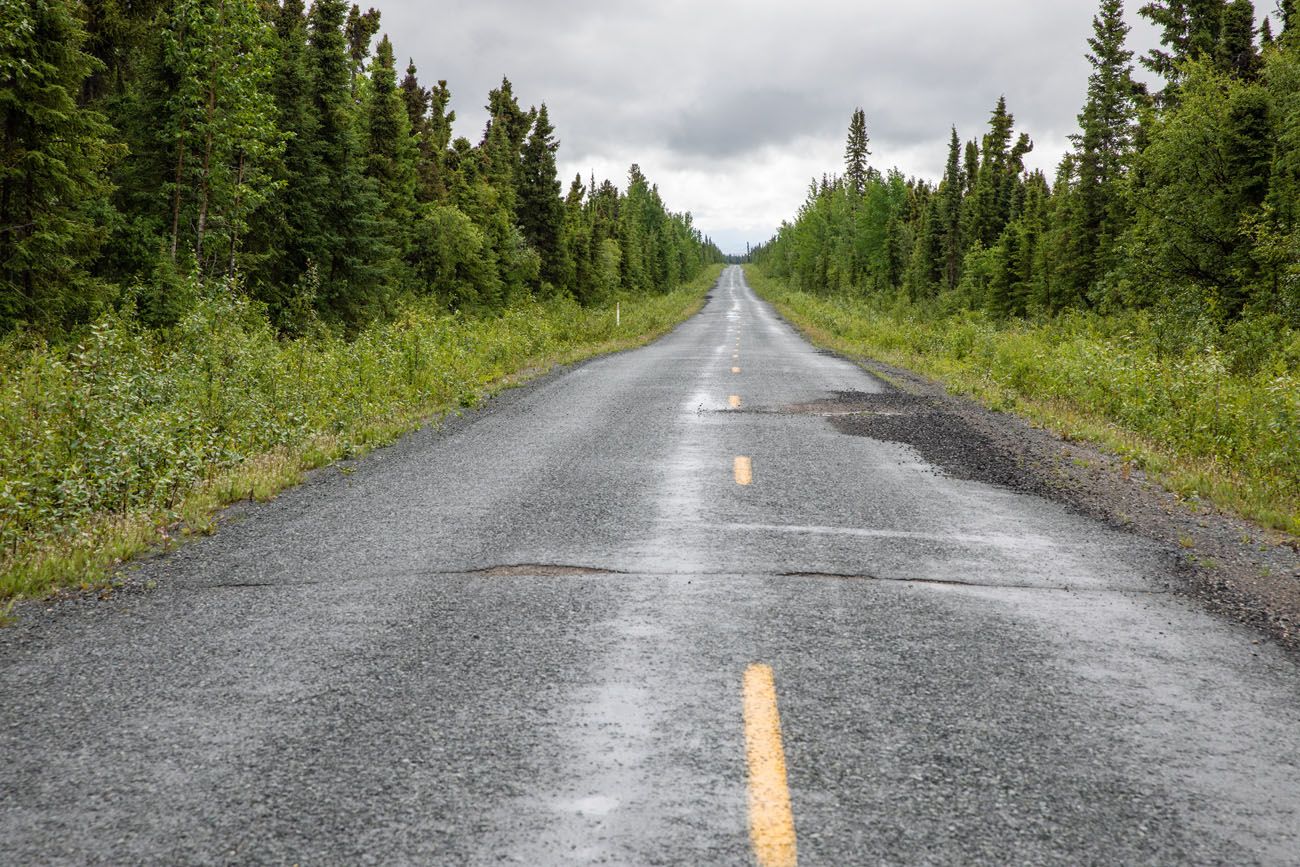
The road is paved until mile 15.

This is what the road looks like beyond mile 15.
PRO TRAVEL TIP: There are no gas stations in Slana or along Nabesna Road. Make sure you fill up your tank in Glennallen before driving out to Nabesna Road. We had cellular service until mile 15 of Nabesna Road and we use Verizon.
Things to Do along Nabesna Road
The National Park Service has an excellent guide to things to do along Nabesna Road. You can also pick up a free CD about the drive at the Slana Ranger Station.
Slana Ranger Station: At the start of the drive is the Slana Ranger Station. Stop in here to get road conditions. We spoke to the park ranger and were told that the road should be passable until the very end. Unfortunately, that was not case. The second creek was too high to drive through. Conditions can change from day to day so even the park ranger might not have accurate information to pass on to you, as we learned.
Caribou Creek Trail. At mile 19 you reach the parking area for the Caribou Creek Trail.
Tanada Lake Trail. At mile 24 you reach the parking area for the Tanada Lake Trail.
Trail Creek. At mile 29.8, you reach Trail Creek, the first of three creek crossings. According to the NPS website, there are three creek crossings and usually they are dry. It if has been raining a lot (as it was during our visit), water can flow across the road and a 4×4 may be necessary. There was a small amount of water flowing here during our visit but we had no issues crossing Trail Creek. There is also a trailhead here to hike the Trail Creek Trail.

Trail Creek
Lost Creek Trail. At mile 31.2, you reach the second creek crossing. The water was at least 18 inches deep and flowing fast so we did not attempt to cross it. There is also a trailhead here for the Lost Creek Trail.

Lost Creek
Jack Creek. At mile 35, there is a rest area and the third creek crossing.
Skookum Volcano Trail. At mile 36, you can hike the Skookum Volcano Trail. It is 5 miles round trip and leads to a viewpoint over an ancient volcanic flow. This hike was the main reason why we drove Nabesna Road but unfortunately, we could not make it out this far.
Rambler Mine Trail. Nabesna Road ends at mile 42. This 2 mile hike starts a short distance beyond the parking area and leads to Rambler Mine, an abandoned mine and great views of the Nutzotin Mountains and the Nabesna River.
How Many Days Do You Need in Wrangell – St. Elias National Park?
For the best experience, I recommend spending at least three days in Wrangell – St. Elias National Park. This gives you enough time to drive McCarthy Road, spend some time in McCarthy and Kennecott, take a flightseeing tour, tour the mill, and go hiking. With more time, you can extend your time in McCarthy and Kennecott, add on Nabesna Road, or explore the backcountry.
With one day in Wrangell – St. Elias National Park, take an air taxi from Chitina and spend several hours in McCarthy and Kennecott, either touring the mill, exploring the towns, or going on a short hike. Return to Chitina in the afternoon by air taxi.
With two days in Wrangell – St. Elias National Park, fly or drive into McCarthy on the morning of day one. In the afternoon, take a flightseeing tour (if you drove), take a tour of the mill, and explore McCarthy and Kennecott. On day 2, hike the Root Glacier Trail or the Bonanza Mine Trail and in the afternoon, fly or drive to Chitina and continue on to your next destination.
With three days in Wrangell – St. Elias National Park, fly or drive into McCarthy on the morning of day one. In the afternoon, take a flightseeing tour (if you drove), take a tour of the mill, and explore McCarthy and Kennecott. On day 2, hike the Bonanza Mine Trail or Root Glacier Trail and in the afternoon, fly or drive to Glennallen. On day 3, drive Nabesna Road. Alternatively, you can spend an additional day in McCarthy and Kennecott, rather than driving Nabesna Road.
What We Did
We spent five days in Wrangell – St. Elias National Park. Here is our itinerary:
- Day 1: Drive from Valdez to McCarthy in the morning. In the afternoon, we took the Thirteen Glacier flightseeing tour with Wrangell Mountain Air.
- Day 2: It was a rainy day, so we visited McCarthy midday and toured the Kennecott mill in the afternoon.
- Day 3: Bonanza Mine Trail in the morning. Bagley Icefield flightseeing tour in the afternoon.
- Day 4: Root Glacier Trail in the morning and midday. In the afternoon we drove to Glennallen.
- Day 5: Nabesna Road and we spent a second night in Glennallen.
From Glennallen, we drove back to Anchorage and the following day flew to Katmai National Park.
Our visit was at the very end of June. Rainfall was higher than normal and we were told that the mosquitoes were worse than usual (they were pretty bad). We booked both of our flightseeing tours and the guided Root Glacier hike in at least one month in advance of our trip and got very lucky that we had great weather for all three activities.
Best Time to Visit Wrangell – St. Elias National Park & Preserve
The best time to visit Wrangell – St. Elias is from the end of May through mid-September. During these months, the days are long and the temperatures are cool to warm.
From June through September, the daily high temperatures average about 65°F during the day and 50°F at night. June and July tend to be drier than August and September, and it does rain frequently at Wrangell – St. Elias. June typically gets 14 days of rain and August tends to get 17 days of rain. You can see these stats here.
The end of June is a great time to visit Wrangell – St. Elias National Park. The weather tends to be drier than the later summer months and visitation is high, but not yet at its peak (July tends to get the most visitors).
From late September through mid-May, the lodges and visitor centers are closed and the park can be snow-covered.

View from the Kennicott Glacier Lodge
How to Get to Wrangell – St. Elias National Park
There are several different ways to get to Wrangell – St. Elias National Park and which one you choose depends on where you plan to go and whether or not you will be renting a vehicle.
If you will have a rental car, below are driving distances and times to Chitina from other destinations in Alaska. From Chitina, you can either drive to McCarthy on McCarthy Road (an additional 59 miles and 2 hours of driving, discussed earlier in this guide) or take a taxi flight from Chitina to McCarthy.
- Anchorage: 245 miles, 4.5 hours
- Denali NP: 410 miles, 7 hours
- Valdez: 120 miles, 2 hours
- Fairbanks: 310 miles, 5.5 hours
It is also possible to charter a flight to McCarthy from Glennallen, Anchorage, Denali NP, Valdez, Fairbanks, Seward, and other locations, but these are pricey. Visit the Wrangell Mountain Air website for more information.
If you won’t be renting a car, there are shuttle services between Anchorage and Glennallen and Glennallen to McCarthy.
Where to Stay
If you plan to spend several days in McCarthy and Kennecott, these two towns are the best places to stay.
We stayed at the Kennicott Glacier Lodge for 3 nights and loved it. If we return to Wrangell – St. Elias (which I hope we do!) we would stay here again. There is a main lodge and a south wing. We stayed in the south wing. Rooms are very large, with a private bathroom and views over Kennicott Glacier. Soundproofing isn’t great, so request the second floor if you are a light sleeper, so you don’t hear people walking around above you. They also offer breakfast, lunch and dinner. The food is very good, much better than we expected it to be, given the remote location.

Kennicott Glacier Lodge
In McCarthy, Ma Johnson’s Hotel and Currant Ridge are the highest rated properties. Just outside of McCarthy, near the airport, the Blackburn Cabins get good reviews. It is important to note that these cabins share a shower house and an outhouse (you do not have a private bathroom attached to your cabin).
In Chitina, Gilpatrick’s Hotel and Chitina House Bed and Breakfast get good reviews.
If you will be driving to and from McCarthy and also plan to visit Nabesna, the Glennallen and Copper Center area is another handy location. We stayed at two properties in this area. Antler’s Rest Bed and Breakfast, in Glennallen, is spotlessly clean and cozy and our first pick for the area. Sawing Logzz Bed and Breakfast also gets good reviews. We had the entire lower level of a log cabin house, with two bedrooms, a bathroom, and a kitchen. This property is located in Copper Center.
Where to Eat
We had some of our best meals in Alaska in McCarthy and Kennecott.
The Kennicott Glacier Lodge offers breakfast, lunch, and dinner. They also offer sack lunches if you will be out hiking during the day.
In Kennecott, the Meatza Wagon is amazing! This food truck serves dishes with locally sourced ingredients. They offer vegetarian and gluten free dishes. Our favorite dishes are the Souvlaki Steak Bowl and the Vegetarian Burrito Bowl.
In McCarthy, the Potato is also very good.

Meatza Wagon
Plan Your Visit
Entrance Fee: There is no fee to visit Wrangell – St. Elias National Park & Preserve.
Hours of Operation: The park is open 24 hours a day, 365 days a year. The visitor centers and ranger stations are closed from the end of September to mid to late May.
Cellular Service: Our cellular service provider is Verizon and the service was great in McCarthy and Kennecott. However, we had limited service on McCarthy Road and Nabesna Road. I have heard that if you have a different cellular service provider, you may have limited to no cellular service in McCarthy and Kennecott.
Get updates on road conditions and trail closures, as you plan your trip and just before your visit, on the National Park Service website.
If you have any questions about the best things to do in Wrangell – St. Elias National Park and Preserve, or if you want to share your experience, let us know in the comment section below.
More Information for Your Trip to Alaska










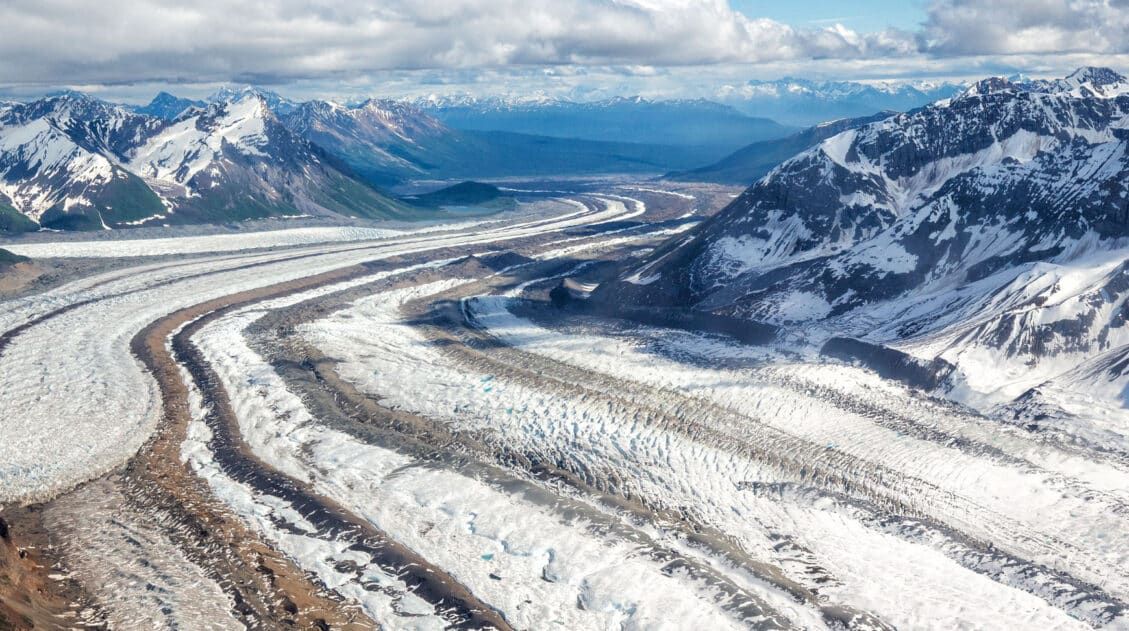



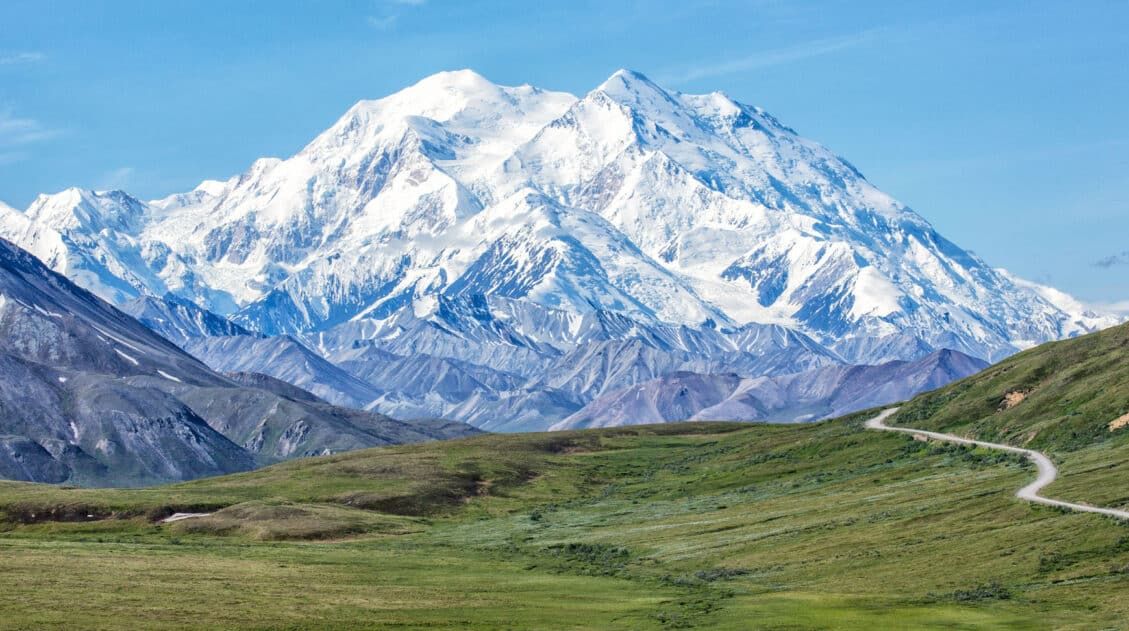

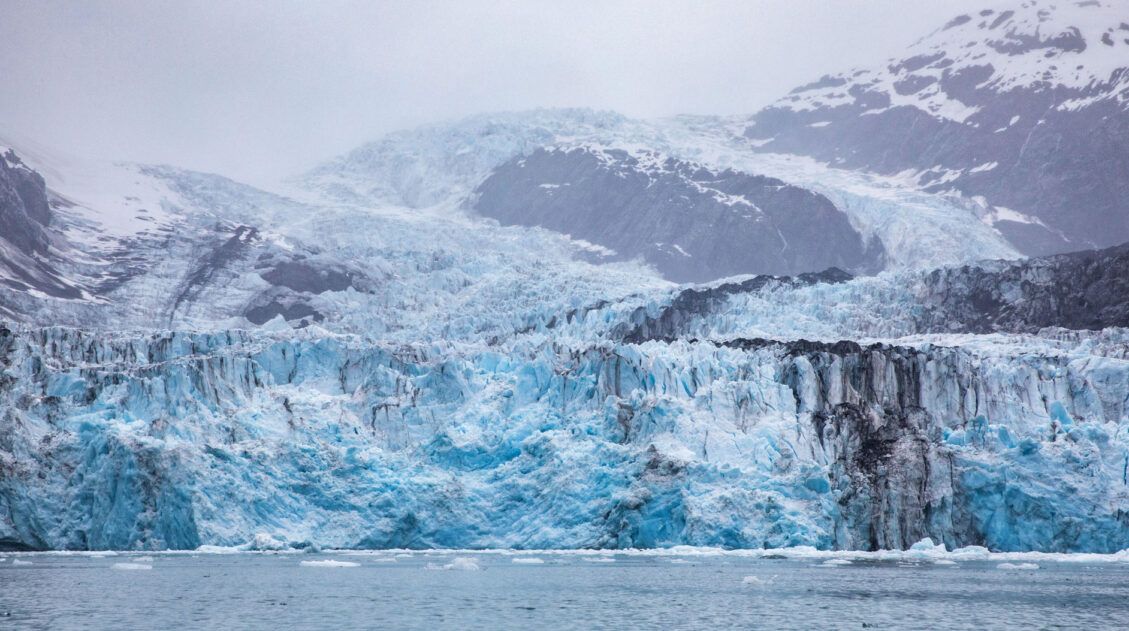




Comments 7